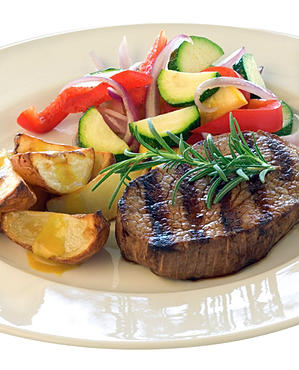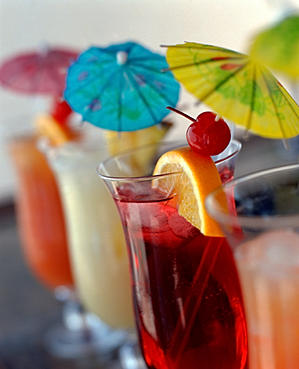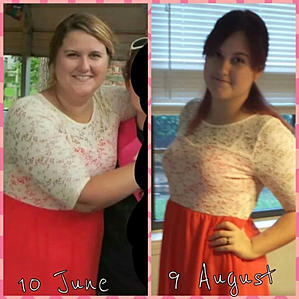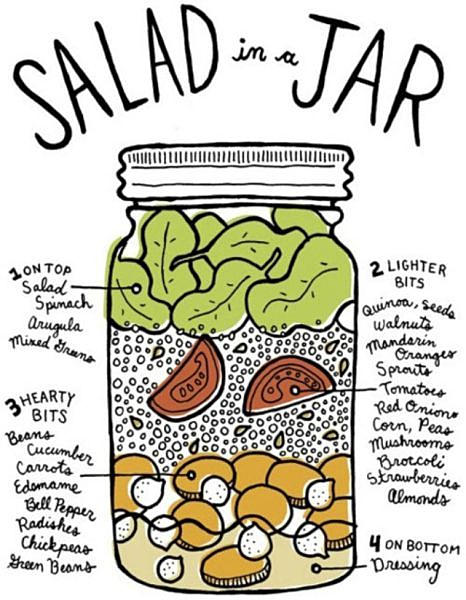This year, for my New Year's Resolution I decided to give up fast food. Once I start eating fast food I usually fall into that nasty cycle of eating out a lot. It lowers my motivation. As many of you know, weight loss starts in the kitchen. If you eat incorrectly it will slow your results way down.
Since I've given it up, I've been asked a few times WHY I gave it up. "Isn't making the same meal at home just as bad?", I was asked. I repeated my weight loss answer but aside from that I realized I had nothing nothing to back it up. It sounded healthy so I decided to do it. There was no research involved. I needed answers...
...And the best person to turn to for answers is Big Dave.
Dave McClain is a former fast food addict who lost 155lbs within a year. He gave up all fast food, started Beachbody’s Shakeology and started fitness programs like Insanity and P90x. He began coaching for Beachbody back in 2013 and has even gone on to win cash prizes from the Beachbody Challenge. To me, he was the perfect person to ask for advice. He gave me a few very helpful links to start me off and so I began my research.
 |
| “I know there are people who don't believe they are strong, so I have made it my goal, to prove them wrong.” |
McDonald’s French Fries
Today we are only looking at the fries. I figured something so small and easy couldn’t be a huge issue. I went to the McDonald’s nutrition info page and began watching their [video]. The first thing I noticed is that they enlisted Grant Imahara from the Discovery Channel show, Mythbusters. That, to me, was a very good sign. He is a scientist and more-so than me, he knows what each product does. He would never endorse something that wasn’t truly safe.
It started off listing every ingredient in the USA McDonald’s fries, and the process of how and why they are all added. There are 14 different ingredients (Grant said officially there is 19 -I don’t count the doubles).
A few of these I totally didn't understand. Even with Grant’s explanation I still felt very lost. Try as I might, I cannot say dinethyl...dimathol..dimeathylsilicone. Yeah. That huge one.
Hydrogenation oils were first on my list to look up.
David Schleifer, a researcher at a nonprofit group called Public Agenda, in New York, says most scientists in the 1980s actually thought this kind of oil was probably safer than lard or palm oil. Schleifer wrote a recent journal article on the history of trans fats.
According to the NPR website, new studies in the 1990s were showing that trans-fat raises bad cholesterol and increases risk of heart attacks. It goes on to say that:
In fact, they were even worse than saturated fats. In 2006, after a campaign by public health advocates, the FDA required food companies to add trans fats to food labels.
Most companies responded by drastically cutting their use of partially hydrogenated oil. That had a big impact on consumption — Americans consumed around 1 gram per day in 2012, down from 4.6 grams per day in 2003.
From what I gather, as long as you don't eat a whole bunch at once it shouldn't be too bad.. but it certainly makes me wonder exactly HOW much of this oil is used to make our fries. Does it go in their burgers and other products as well?
Hydrolyzed wheat and milk. Hydrolyzed milk is most commonly found in baby formulas. According to Wikipidia, the definition is a protein (in this case, wheat or milk) that has been hydrolyzed or broken down into its component amino acids. While there are many means of achieving this, two of the most common are prolonged boiling in a strong acid (acid-HVP) or strong base or using an enzyme such as the pancreatic protease enzyme to simulate the naturally occurring hydrolytic process.
Wheat protein is favored for making MSG because it has a very high proportion of glutamine compared to other foods. Wheat hydrolysate is typically 25-30% glutamine, which turns into MSG when salt is added.
According to some MSG opponents the glutamate added to foods is "bad" and the natural glutamate in our bodies is "good". The fact that the glutamate the body is used to handling is also in MSG may present a problem because an excess of naturally occurring glutamate is well known by neuroscientists to be a problem in many disease states.
Citric Acid is a sharp tasting acid present in the juice of lemons and other sour fruits. It is made commercially by the fermentation of sugar and used as a flavoring and as a setting agent. The easiest way to describe it’s job is for flavor (in many drinks and foods) and as a preservative. [Google]
Dimethylpolysiloxane (also known as polydimethylsiloxane or PDMS) is used as an ‘anti-foaming agent’ according to the McDonald’s video. The FDA approves it as a safe food additive. This compound is found in many non-stick prays and very often used in fast and processed foods (as well as fountain drinks). There have been no major studies of PDMS by the FDA since 1998 when they approved it for consumption. It has been known to contain formaldehyde as a preserveder, and can feature other chemicals that are not required to be listed.
Something I found interesting is that it used to be a common chemical used as a filler fluid in breast implants. It has started to phase out due to safety concerns. [foodbabe.com]
Dextrose. Most of us know that if it ends in ‘ose’ on a label, it’s just another way of saying sugar. Dextrose is no exception.
Dextrose is a form of glucose derived from starches. It is one of the most commonly used ingredients in packaged foods because of its affordability and wide availability. Baking products and desserts often contain dextrose, but it may be used as an added sugar in any processed food that is sweetened by the manufacturer. Because the name varies depending on its original starch source, you may not realize a particular food contains dextrose.
Glucose is a sugar derived from plants. For this reason, MedlinePlus classifies dextrose as a “natural” sugar. The difference between the two is that dextrose contains water, while glucose does not. Water is added to glucose during processing to create dextrose from starch. On a food label, glucose with one water molecule may be listed as “dextrose monohydrate.” It is not the same as maltodextrin, a compound that contains multiple dextrose molecules. [livestrong.com]
Sodium Acid Pyrophosphate or disodium pyrophosphate, is an edible phosphoric salt that helps create leavening used for baking, such as baking powder, and prevents food discoloration, such as in raw potatoes. In its bulk state, such as at the manufacturing laboratory, the acidic nature of sodium acid pyrophosphate may be very hazardous upon skin or eye contact, inhalation or ingestion, causing severe inflammation. The U.S. Food and Drug Administration considers if safe for human consumption, however, in its dispersed state as a food ingredient. [livestrong.com]
According to the FDA’s website, it states that it is Generally Recognized As Safe (GRAS), although the total phosphorus intake should not exceed the total calcium intake for the day (which is usually set at 800mgs). I hope you guys are drinking a lot of milk with your meals.
So, what the heck does TBHQ even stand for, anyways?
TBHQ, tertiary butylhydroquinone, is a highly effective antioxidant. In foods, it is used as a preservative for unsaturated vegetable oils and many edible animal fats. It does not cause discoloration even in the presence of iron, and does not change flavor or odor of the material to which it is added. [Google]
Many of the websites I looked through were screaming in terror over the fact that it is a by-product of petroleum and related to butane (lighter fluid). TBHQ contains a butyl moiet, just like butter. The contrast between butane and butyl is actually pretty great. Like many other chemicals, if you ingest too much of this strange compound it can be toxic, but the amount used in McDonald’s fries are no more than .02% as regulated by the FDA. You generally need to ingest a gram or more for side effects (thats over 300 french fries), and 5 grams can be fatal.
To sum everything up, McDonald’s fries seem pretty scary when you remember they are but a side in a usual meal. We haven’t even looked at the burger or drink yet. Looking this all up has only strengthened my resolve to avoid fast food in general and stick to my New Year resolution. I mentioned only a little of this to my husband (who is an avid fast food lover) and he was even turned off (Woo! Progress!). For those of you who may decide to continue eating fast food... No worries! As long as you watch how much you eat, limit portions, and don't make it a habit I see no reason why you should have any cause for immediate worries. If you have any questions about your eating habits please consult a doctor. For more information on Mcdonald's (or any fast food chain's) ingredients list, check their websites.
----------------------
Have any info to add, or corrections for me? What food item would you like to learn more about? Leave a comment and I’ll get back to you! Thanks for reading!







